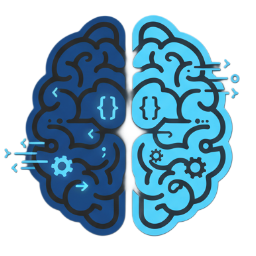As a Lead Software Engineer who has observed numerous AI implementation attempts across various teams, I’ve seen the same pattern repeat countless times: teams rush to deploy AI tools expecting immediate productivity gains, only to find themselves struggling with inconsistent results, poor code quality, and frustrated developers. The recent discussion from r/VibeCoding about using AI at FAANG companies offers valuable insights, but I believe we need a more structured approach for corporate environments where teams operate at vastly different skill levels.
The Common Pitfall: Chasing Quick Wins
Many organizations fall into the trap of marketing AI as a silver bullet that will instantly boost productivity by 30% or more. Teams get excited about tools like GitHub Copilot or Claude, expecting immediate results without considering the fundamental challenges: inconsistent requirements, lack of proper documentation, and varying skill levels across team members.
Instead of promising quick results, we should put attention on preparing and understanding requirements. This foundational step is where most AI implementations fail. Without clear, well-documented requirements, even the most advanced AI tools will generate code that misses the mark.
A Structured Approach to AI Implementation
Phase 1: Foundation Building with AI-Assisted Planning
The implementation should begin with using AI to help us provide proper plans. Modern AI tools excel at breaking down complex requirements into actionable tasks, identifying potential integration points, and suggesting architectural approaches. However, this is just the starting point.
We should review plans with a peer, senior developer, or even AI to ensure thoroughness. The review process acts as a quality gate, catching assumptions and gaps that might not be obvious during initial planning. This collaborative approach, whether human-to-human or human-to-AI, creates a more robust foundation.
Once the plan is solidified, we should think about how to test our approach. This includes unit tests, integration tests, and validation criteria for each component. AI tools can assist in generating test scenarios and edge cases that human developers might overlook.
With comprehensive tests defined, we can plan the order of modules to be completed. This sequencing should consider dependencies, risk factors, and team capabilities. Each module should be created and validated properly before moving to the next, ensuring incremental progress and early detection of issues.
Phase 2: Skill Development Through Practical Labs
For teams new to AI-assisted development, we must start with fundamentals. Begin by introducing basic GitHub Copilot features through hands-on exercises:
- Simple Calculators: Build basic mathematical operations to understand code completion and suggestion acceptance
- Simple Web Pages: Create static and dynamic pages to learn AI-assisted HTML, CSS, and JavaScript development
- API Integration: Connect to external APIs to process data and understand how AI helps with endpoint integration and error handling
- Process Automation: Develop scripts that automate repetitive tasks, showcasing AI’s strength in generating boilerplate code
- Model Integration: Demonstrate how to connect applications to AI models for response generation, introducing concepts like prompt engineering and response processing
These labs should progress incrementally, allowing developers to build confidence with AI tools before tackling complex projects.
The OpenAI Cookbook’s optimization section provides developers with practical guidance on reducing API costs through batch processing, fine-tuning models for specific use cases, and implementing evaluation frameworks to continuously improve AI system performance.
https://cookbook.openai.com/topic/optimization
Phase 3: Advanced Application Development
Once team members demonstrate fluency with basic AI-assisted tasks, organize bootcamps or contests focused on creating applications with AI tools. The key differentiator here is putting attention on requirements, documentation, and tests. This reinforces that AI is not just about faster coding—it’s about building better software more systematically.
These challenges should emphasize:
- Clear requirement specification
- Comprehensive documentation generation with AI assistance
- Test-driven development using AI-generated test cases
- Code review processes that include AI validation
Phase 4: Leadership Development and Team Scaling
From these bootcamps, identify AI leads who can help others and create smaller AI teams with designated leaders and followers. This peer-to-peer learning model is particularly effective because AI leads understand both the technical challenges and the learning curve their colleagues face.
These smaller teams should tackle progressively complex projects, eventually working with advanced concepts like MCP (Model Context Protocol) servers and sophisticated AI integrations that go beyond simple code completion.
Lessons from FAANG-Level Implementation
The r/VibeCoding post highlights several crucial principles that align with enterprise needs:
- Always start with solid design documentation and architecture – AI tools are most effective when they have clear context and requirements
- Build in chunks – Break complex systems into manageable modules that can be developed and tested incrementally
- Write tests first – AI excels at generating comprehensive test suites when given clear specifications
- Implement proper review processes – Even AI-generated code requires human oversight and validation
The reported ~30% speed increase from feature proposal to production is achievable, but only when these foundational processes are in place.
Measuring Success Beyond Speed
While productivity metrics are important, successful AI implementation in corporate environments should be measured by:
- Code quality consistency across different skill levels
- Documentation completeness and accuracy
- Test coverage and reliability
- Team confidence in making architectural decisions
- Knowledge transfer effectiveness between team members
The Path Forward
AI-assisted development isn’t about replacing human judgment—it’s about augmenting human capabilities with systematic processes. By focusing on requirements clarity, proper planning, peer collaboration, and incremental skill building, organizations can realize the transformative potential of AI tools while avoiding the common pitfalls of rushed implementations.
The goal isn’t just to code faster; it’s to build better software with more predictable outcomes, regardless of individual team member experience levels. When implemented thoughtfully, AI becomes a force multiplier that elevates entire teams rather than just individual contributors.

